Bulb lasagne ideas and combinations to try: 10 looks for eye-catching containers
These bulb lasagne designs will bring any patio or deck to life when spring arrives
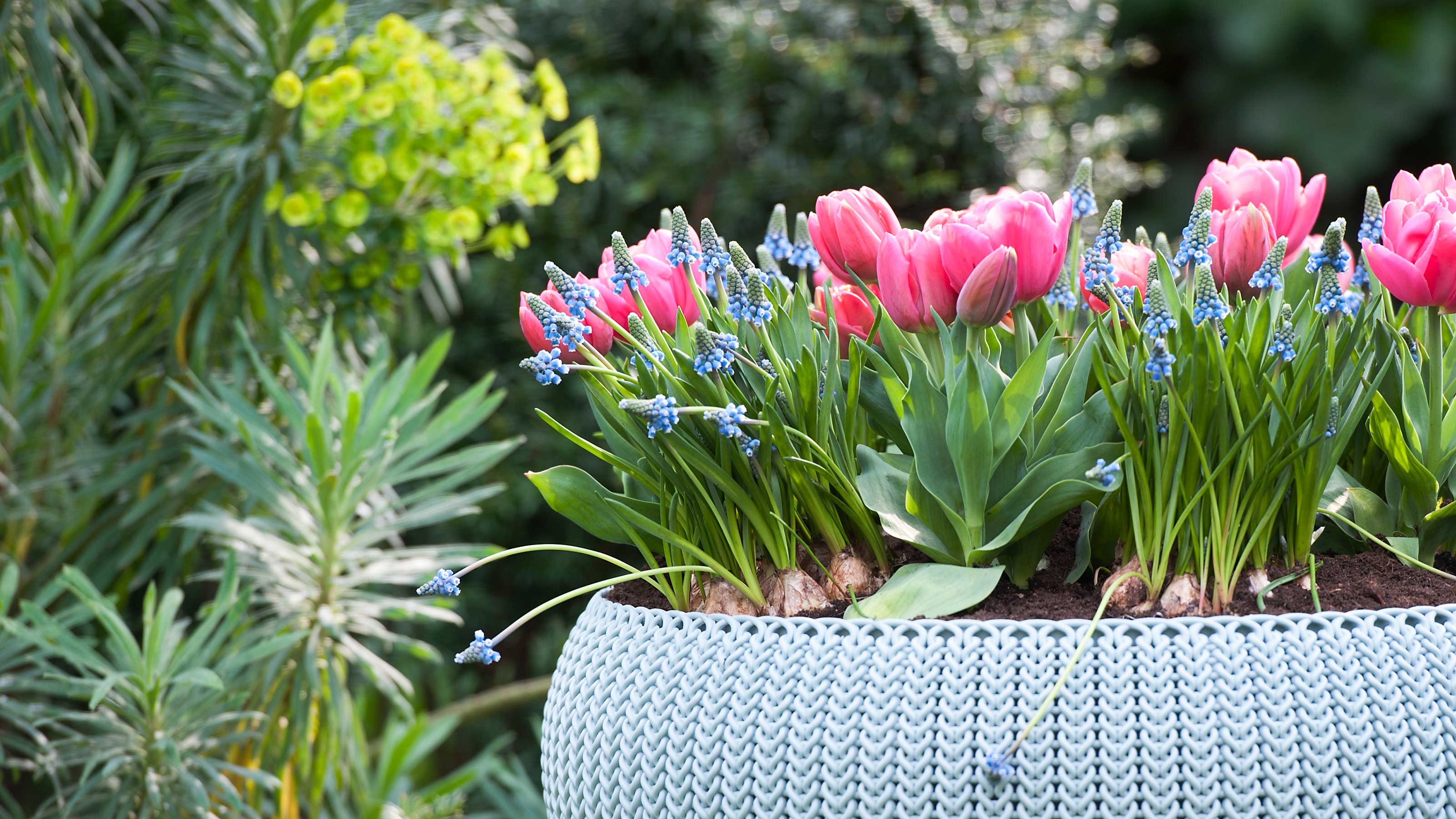

One of the best ways to welcome spring in your garden is with a gorgeous bulb lasagne or two. And we've got plenty of ideas for combinations to try. But, if you're wondering what exactly a bulb lasagne is, let us explain.
Different types of spring bulbs bloom at different points in the season. For instance, you've got your early bulbs, such as snowdrops, anemones, and crocuses, which will flower as early as February. As these begin to fade, other contenders come into their own – think muscari, narcissus and hyacinths, and then tulips and alliums. A lasagne is a clever approach to planting bulbs as it enables you to grow all these flowers in one container, by arranging them in layers. As they grow, they'll provide waves of color and interest throughout the whole of spring.
They're easy to create, as you'll see from our guide on how to plant a bulb lasagne. Just remember to plant the larger, later-flowering bulbs at the bottom, and the smaller, earlier ones at the top.
There are all kinds of varieties that you can plant together to make a show-stopping display. But, to get you inspired, we've brought together some of our top favorite looks.
10 gorgeous bulb lasagne combinations to try
From modern brights to cottage-garden-style pastels, you'll be sure to find a look you love from these bulb lasagne ideas.
1. Combine red tones with blues for a boho vibe
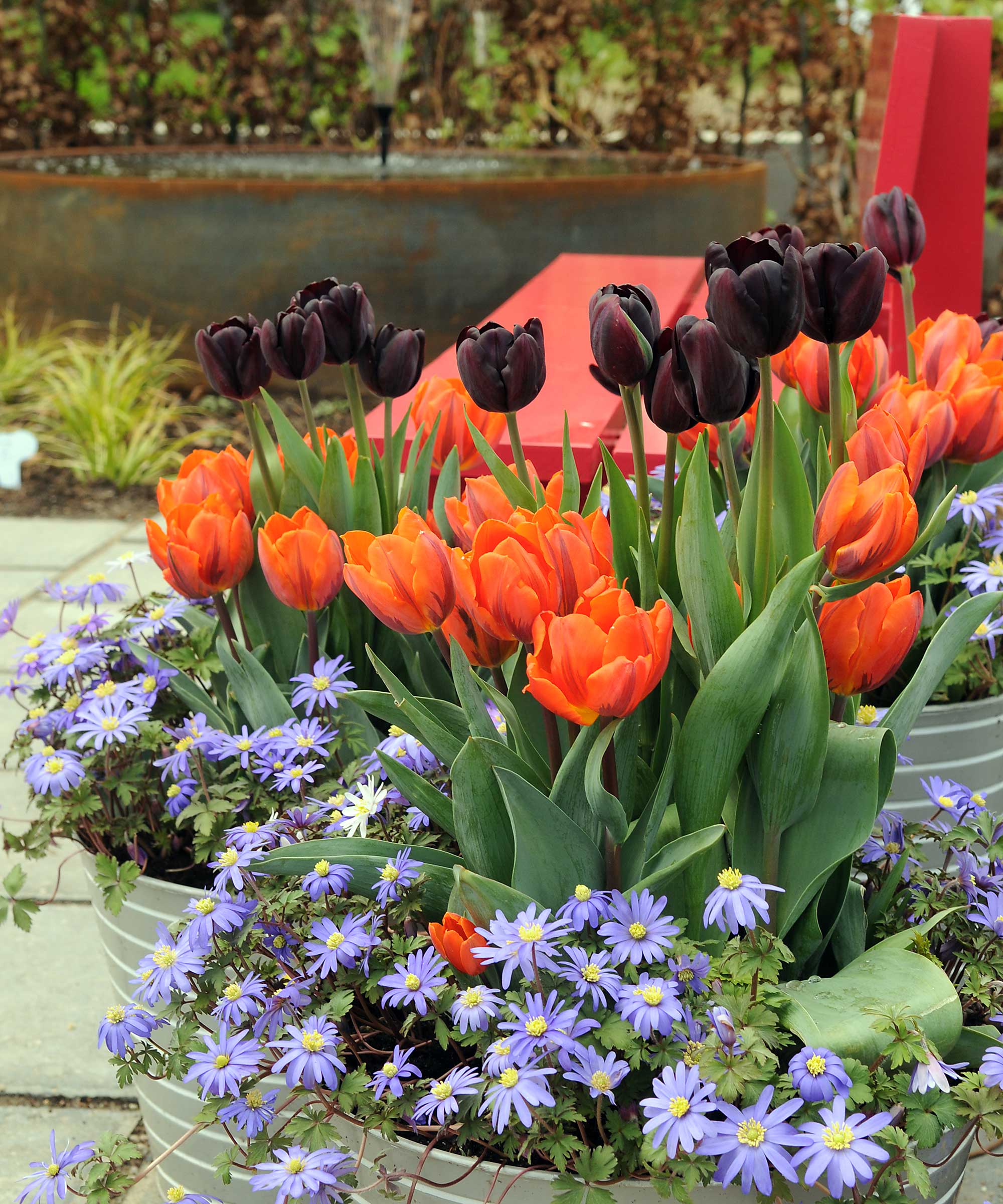
We love the artistic look of this combo
Tulips are an absolute must when it comes to planting up a bulb lasagne. Who can resist their glossy petals and elegant structure?
Mix bright coral-reds with deep, almost-black hues for an artsy vibe. The mysterious 'Queen Of Night' works well alongside the vibrant (and lightly-scented) 'Brown Sugar', for instance, and both will flower in mid-April to around the same height.
For extra pizzazz, switch out a more simple red variety for 'Artist' – it has to be one of our favorites with its watercolor-like streaks of red and green. As it's slightly shorter than 'Queen Of Night', it will bring an interesting variety of levels to the display.
Add in some pretty blue anemones too – the contrast in colors is beautiful. These can be planted in the top layer of your bulb lasagne and will provide flowers from around March onwards.
You can find more tips on how to plant tulip bulbs in our guide.
2. Mix up hyacinths in soft hues
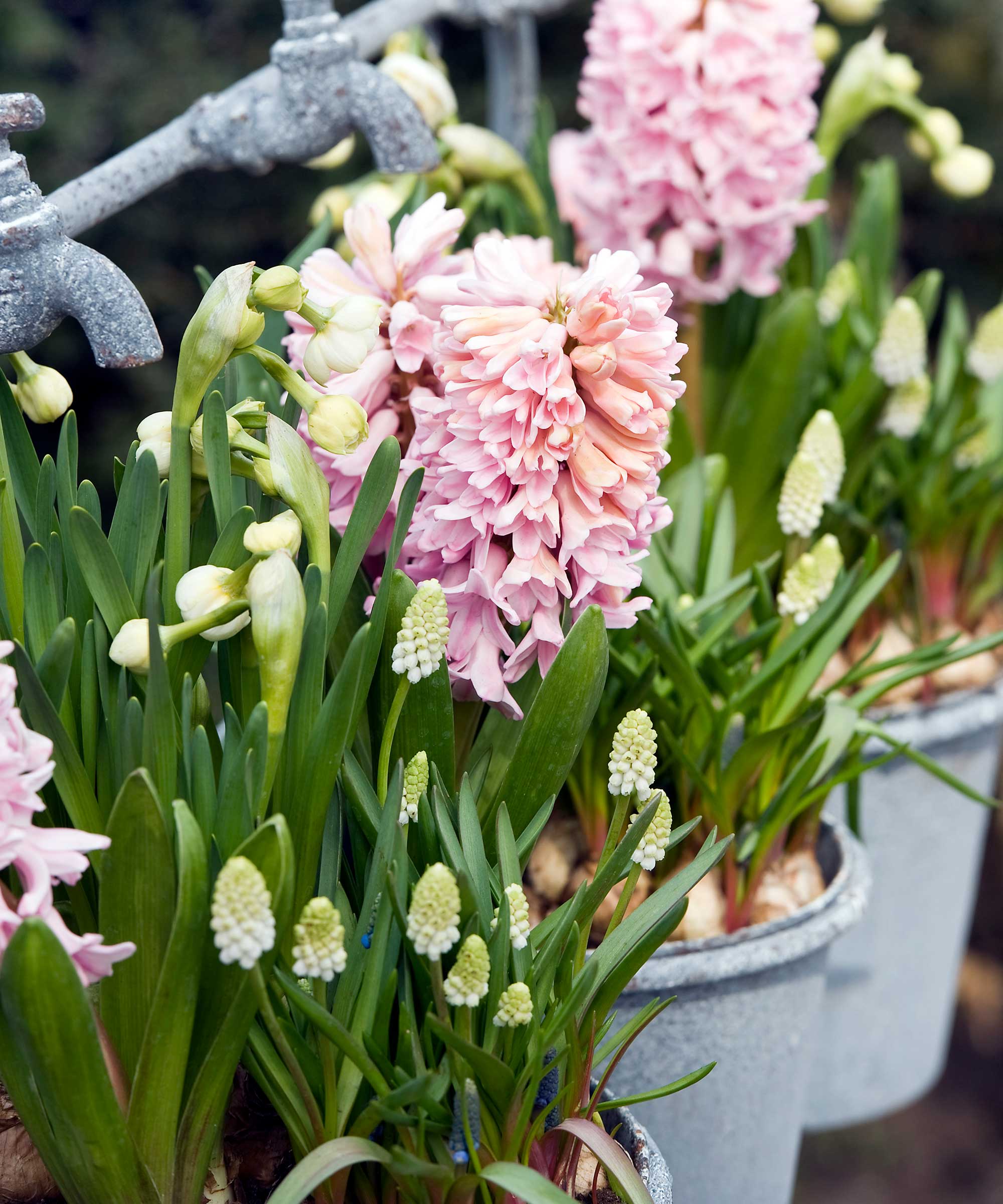
Pretty pink hyacinths look beautiful alongside white muscari
Muscari, also known as grape hyacinth, are a classic spring choice. They're most commonly found in shades of indigo blue, but the white 'Siberian Tiger' makes a lovely alternative.
Pair with larger hyacinths in pastel pink for a balanced display that's well-suited to cottage gardens. 'China Pink' is particularly pretty. The two will flower around the same time – mid-March onwards.
Try layering up smaller pots and clustering them together on a patio or windowsill. Our cottage garden ideas have lots more inspo if you want to extend the theme.
3. Create an early-flowering display
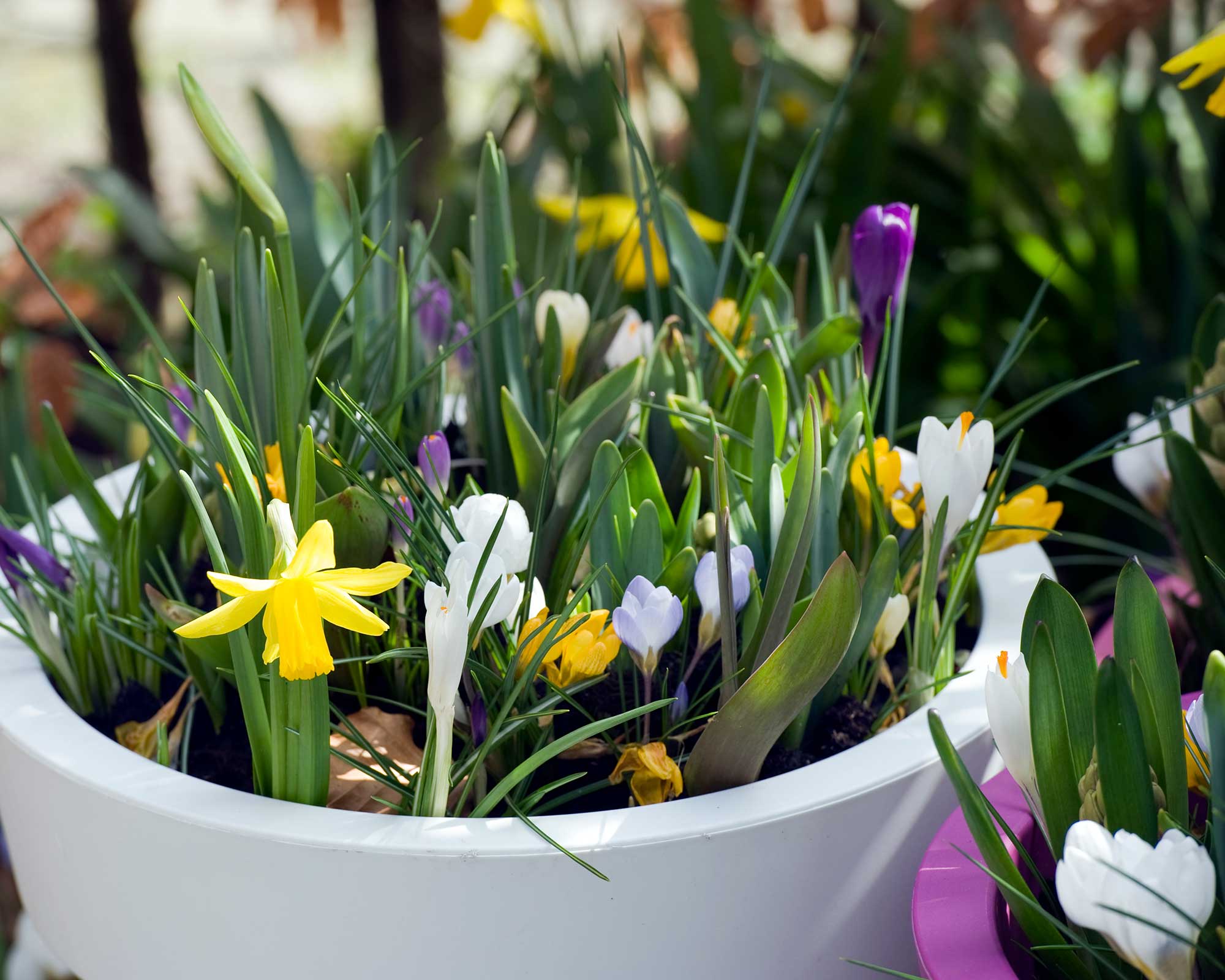
Crocuses and early daffodils make a joyful combo
Already learnt how to plant crocus bulbs? They make a great addition to a bulb lasagne. Being one of the earliest spring blooms, they'll bring some of the first splashes of color to the garden – from bright yellow and deep purple to silvery-blue.
Add in some early narcissus bulbs for an uplifting display – 'Tête-à-tête' is small in stature but still packs a punch. Winter irises make a pretty addition too.
Later-flowering bulbs, such as tulips and alliums, can be tucked underneath, ready and waiting for their time to shine.
4. Embrace the energy of spring with yellow and red
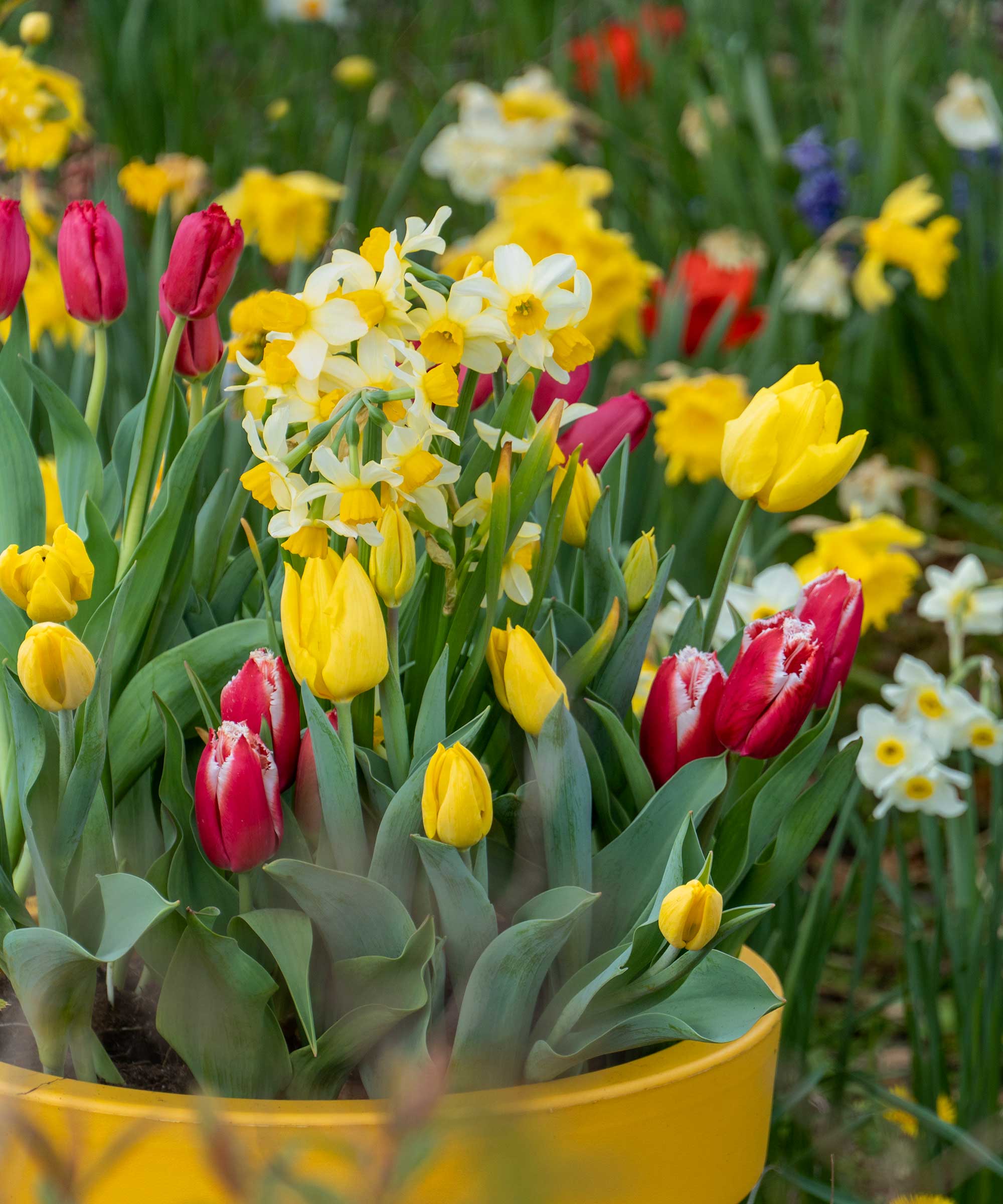
This brightly-colored display is bound to turn heads
One of the easiest ways to give any garden display a pulled-together look is to stick to a minimal color palette. After all, sometimes, simple is best.
A duo of red and yellow perfectly encapsulates the energy of spring. Daffodils are an obvious pick (and you can learn plenty of tips on how to plant daffodil bulbs in our guide). But, consider combining them with yellow and scarlet tulips. In fact, there are even varieties of tulips that are both red and yellow – try 'Helmar' or the irresistibly frilly 'Flaming Parrot'.
5. Go for understated elegance
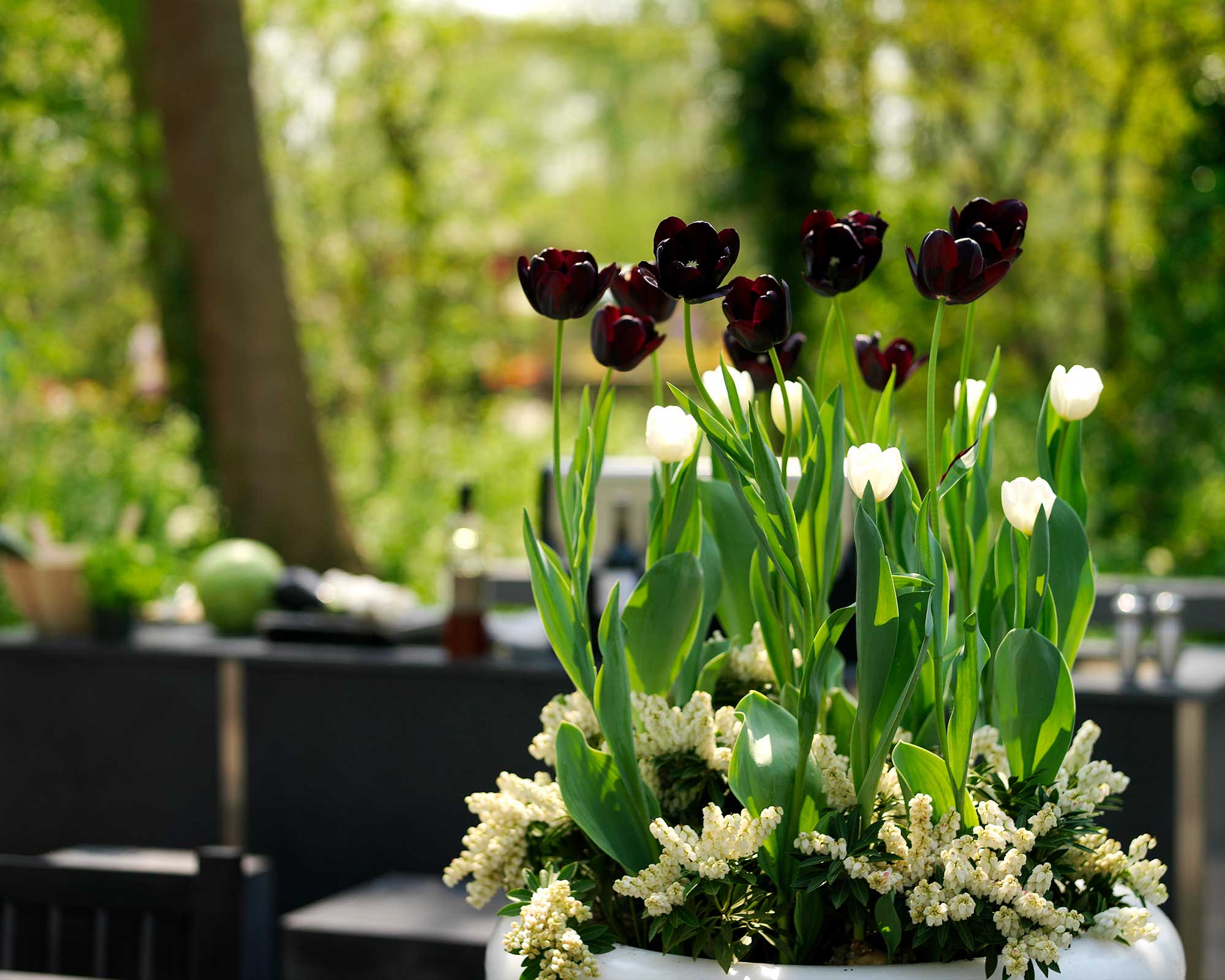
Keep it pared-down with a monochrome scheme
This look is perfect if you're a fan of modern garden ideas.
Oozing with elegance, the deep, dark tulips contrast beautifully against white. Plant in a galvanized pot for an additional on-trend edge.
'White Dream' is a popular variety that works well with the aforementioned 'Queen Of Night'. Although, if you're after something a little jazzier, pair it with 'Black Parrot' instead.
6. Plant an all-white, scented scene
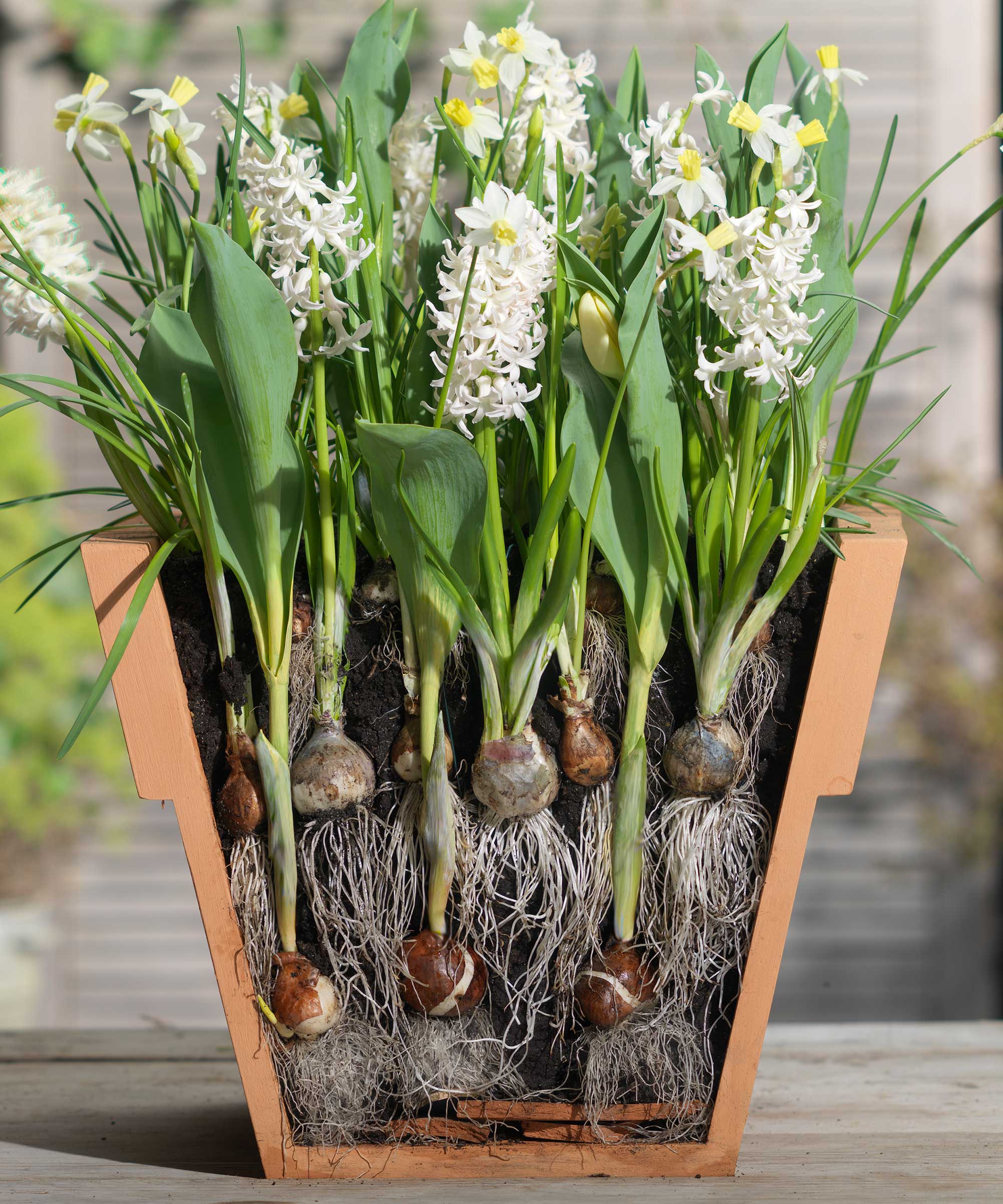
A beautiful arrangement for an elegant patio
Some spring bulbs are brilliant for bringing scent to your garden. Hyacinths are one example, offering a heady fragrance that's both sweet and mildly spicy.
Some narcissi are beautifully scented too. The pure-white 'Thalia' is a favorite, yet flowers slightly later than others. 'Bridal Crown' is another option, with its clusters of creamy-colored double blooms.
Keep the color scheme pared-back by choosing all whites and allow the fragrance to do the talking.
7. Keep it whimsical with pretty pinks
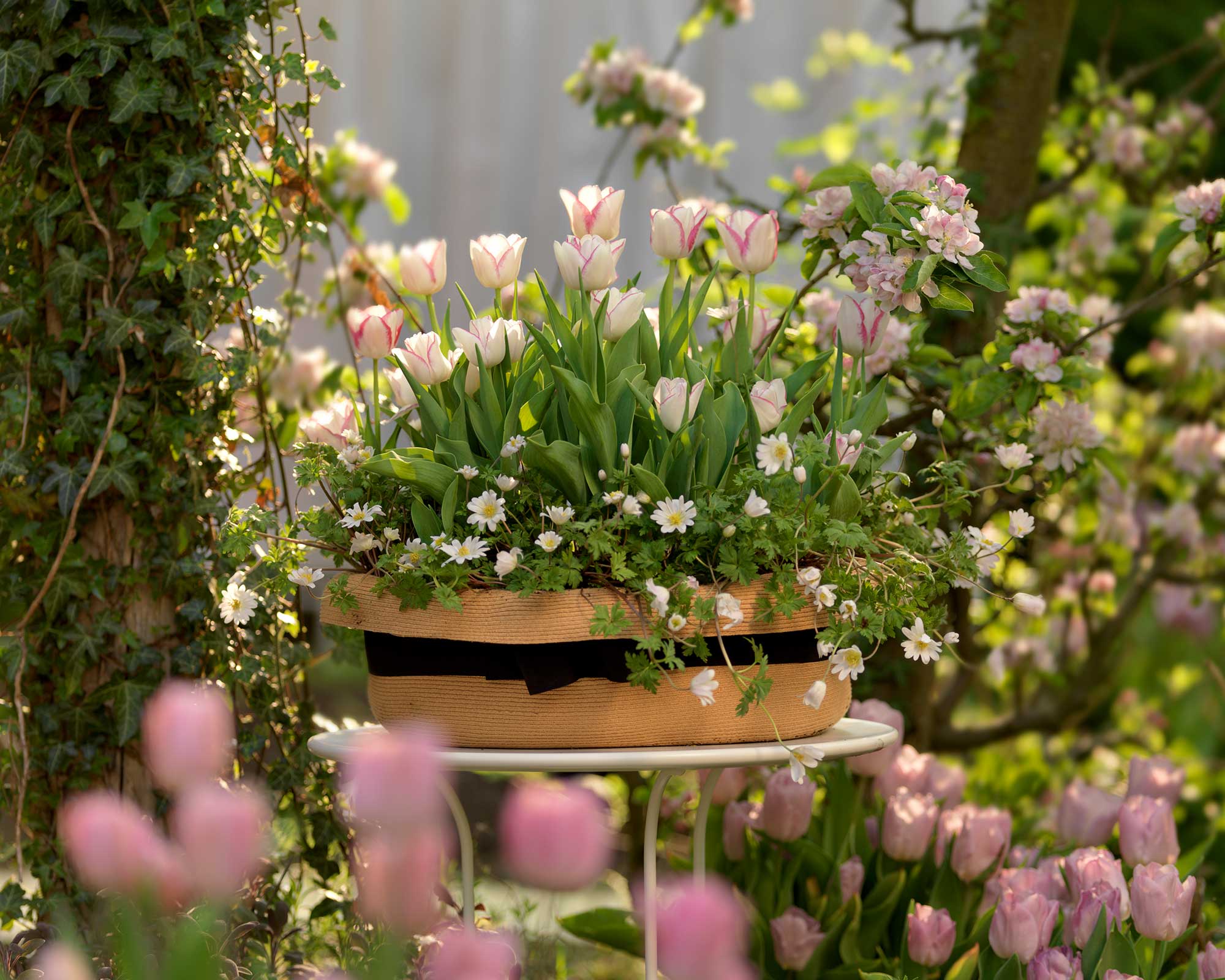
This pretty-in-pink scene is full of romantic charm
This display has a sense of fairytale charm with its pretty pastel hues.
There are lots of beautiful pink tulips to choose from. These include 'Candy Club' which has delicate pink-edged petals, and 'Candy Prince' – a slightly earlier tulip with a soft-lilac hue.
Plan for them to push up through a bed of white anemone blanda as mid-spring takes hold, for a wild and romantic display.
- Need more advice on garden color schemes? Our guide is a great place to start.
8. Add plenty of crocuses
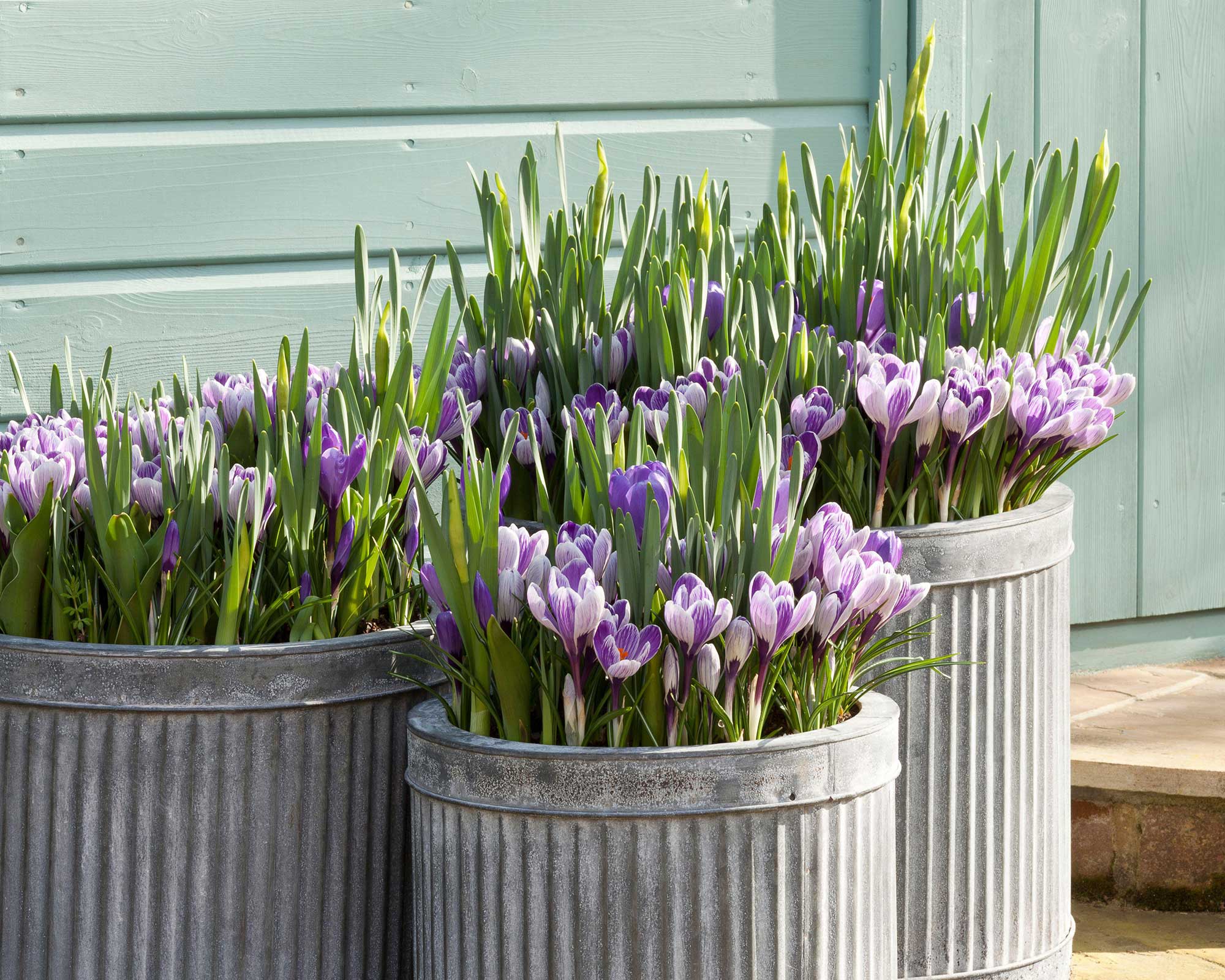
Crocuses en masse will always look stunning
Sticking to one variety and planting it en masse can be even more striking than combining lots of different colors. So when it comes to planting up your earlier-flowering layers, bear this in mind.
Take this display of crocuses, for instance. The cup-shaped, purple blooms look fresh and beautiful, offering all the visual impact needed.
Look closely and you can spot the daffodil shoots poking up too, which promise to take over and keep the display going strong even as the crocuses fade.
- You can find more lovely spring garden ideas in our feature.
9. Frame hyacinths with tulips
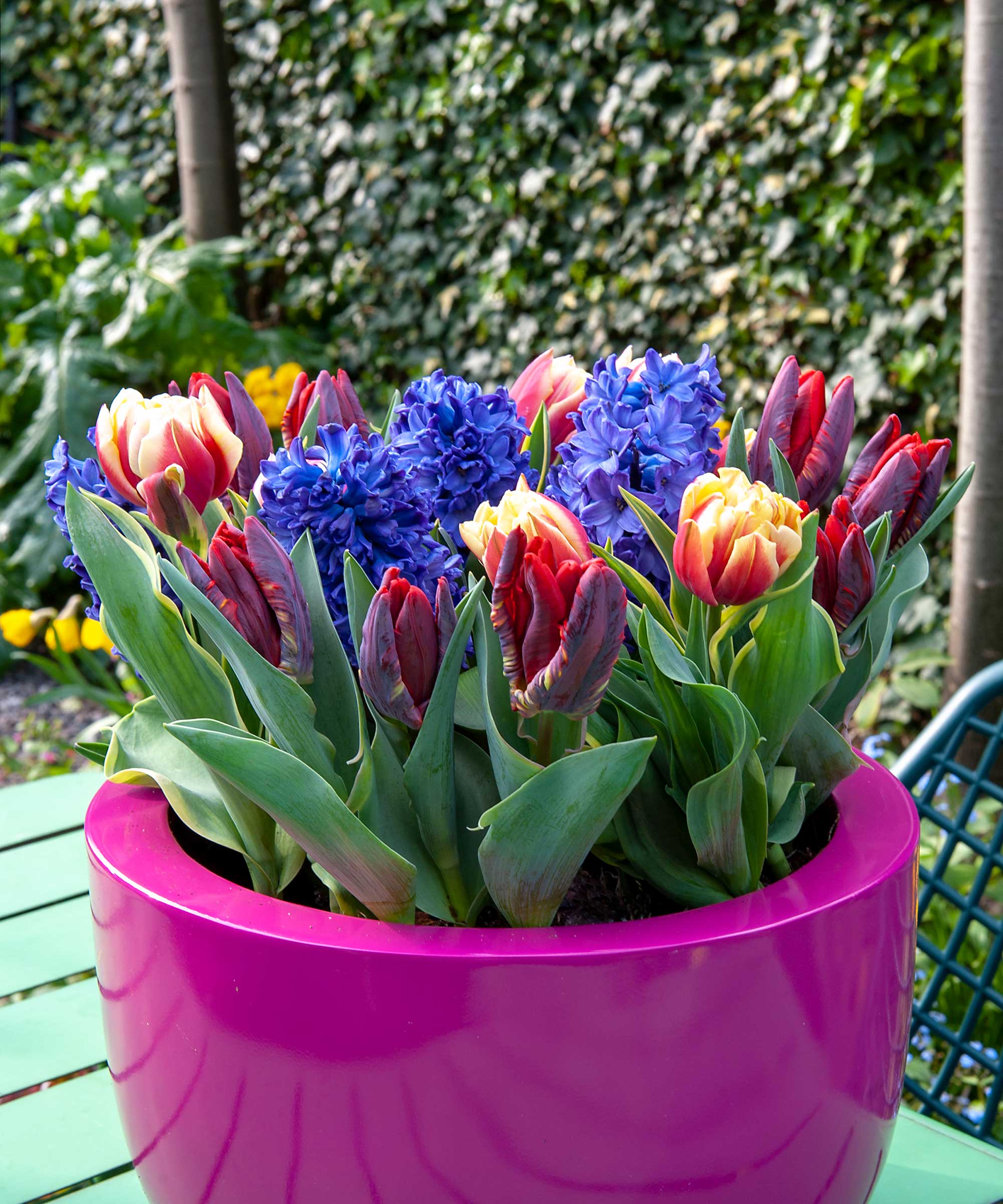
Tulips 'Rococo' and 'Crossfire' surround the stunning hyacinth 'Delft Blue'
Give your bulb lasagne a more orderly look by taking a cue from this design. A ring of tulips beautifully frames the jewel-like 'Delft Blue' hyacinth, and with all the bulbs packed in tightly together, you're guaranteed a show-stopper of a display.
We especially like how the markings of 'Rococo' tie in with the indigo tones of the hyacinth. It's a beautiful yet subtle way to bring harmony to the scene.
Pair with a bold-colored planter for a modern finishing touch – our garden planter ideas have plenty of looks to inspire.
10. Turn heads with pink and blue
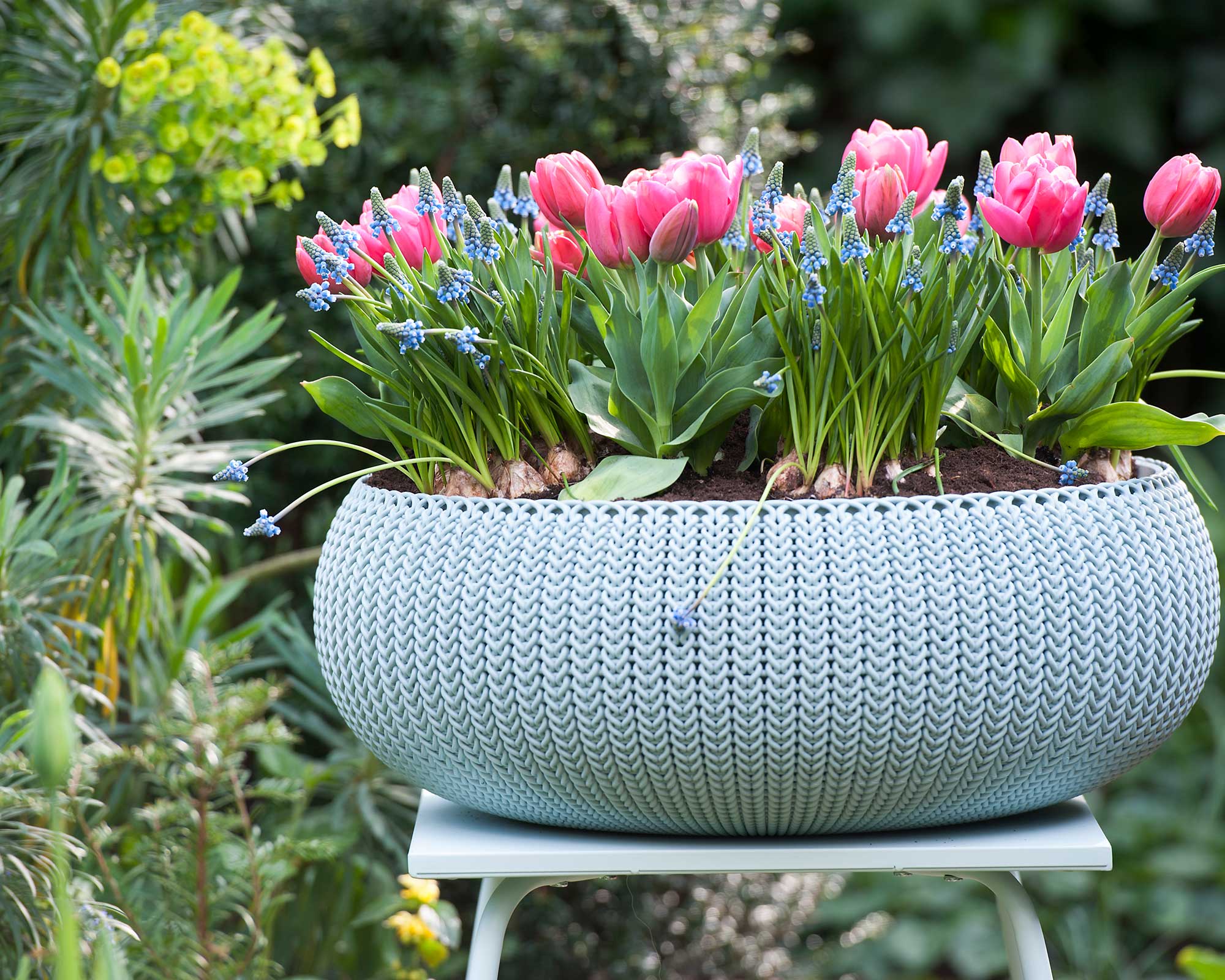
This textured planter makes the perfect finishing touch
Hot pink and baby blue – this combo has a retro feel that we simply adore.
The 'Carola' tulip has a bubblegum-like hue and would suit a scheme like this just perfectly, whilst the double blooms of 'Chato' are similar in color and could almost be mistaken for peonies.
Mix with muscari in classic blue, or if you want to go a step further, try dotting a few bulbs of the blush-colored 'Pink Sunrise' into the mix. Pair with a planter to match – we're loving this textured blue style.
What can you plant on top of bulbs in pots?
Once you've put together your bulb lasagne, consider topping it with some winter pansies or cyclamen to see you through the winter. If you plant them in autumn, they will be nearing their end come early spring, which is when your first bulbs will come into show. The bulbs will still be able to push their way through to the top without problems.
You can also add in some trailing ivy for added texture and greenery. There are more picks for the best plants for winter pots in our guide.
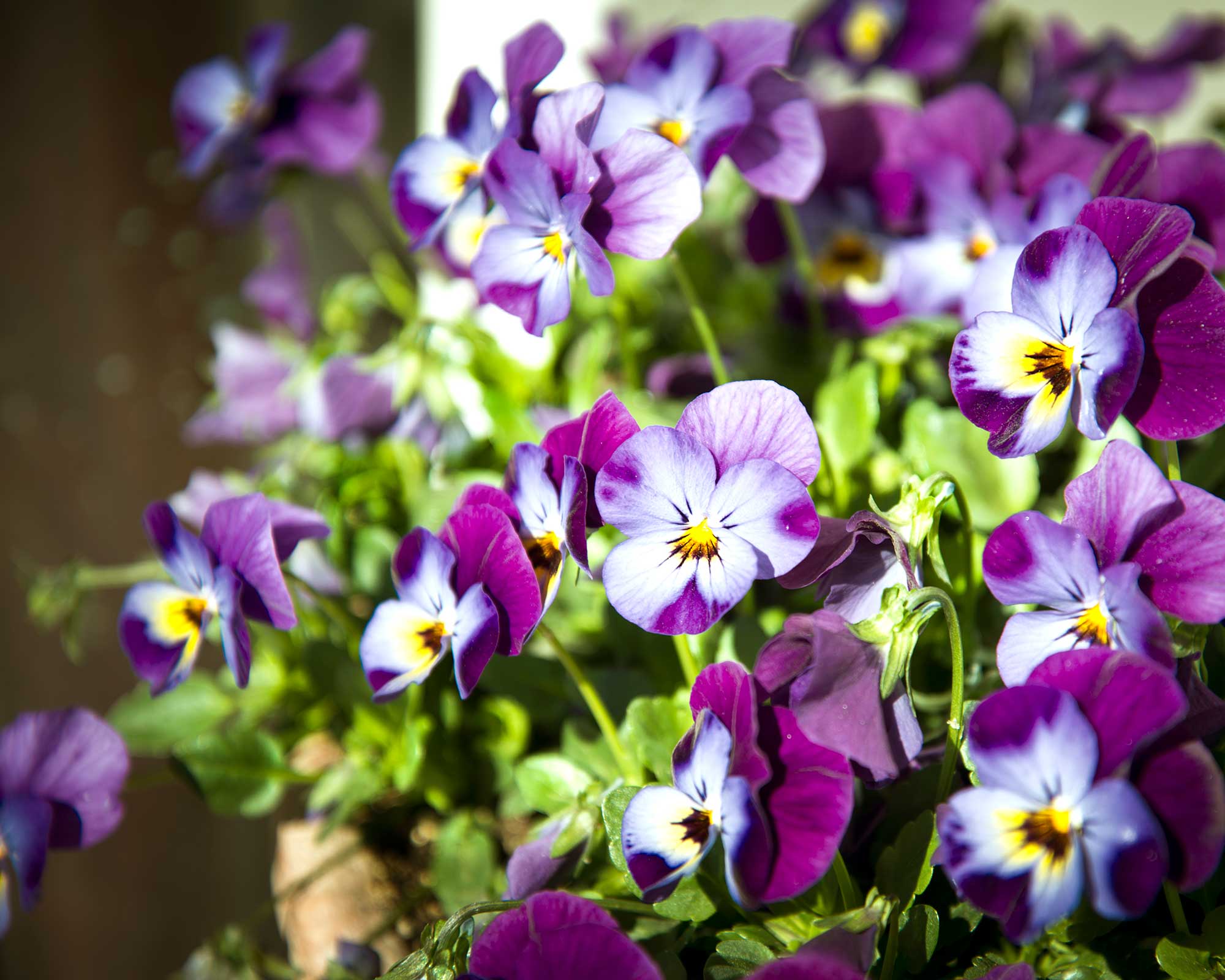
Winter pansies will brighten up the colder seasons
How many layers should a bulb lasagne have?
When it comes to bulb lasagne combinations, most people stick to two layers, at least at first, to get the hang of it. Try to plant the bulbs in a way where they don't sit directly on top of one another.
Once you're feeling confident, try three layers, just make sure you've got a large enough pot to fit them all in. Ensure there's plenty of drainage – you don't want the bottom layer of bulbs to rot.
'Two to three layers is ideal for a bulb lasagne, any more will become too much,' says Chris Bonnett of GardeningExpress.co.uk. 'Aim to plant the bulbs one and a half inches apart from each other and then cover them with a couple of inches of compost and repeat.
'Don't make the mistake of putting too much compost in between your layers,' he adds. 'You'll just make it harder for the lower bulbs to come through.'
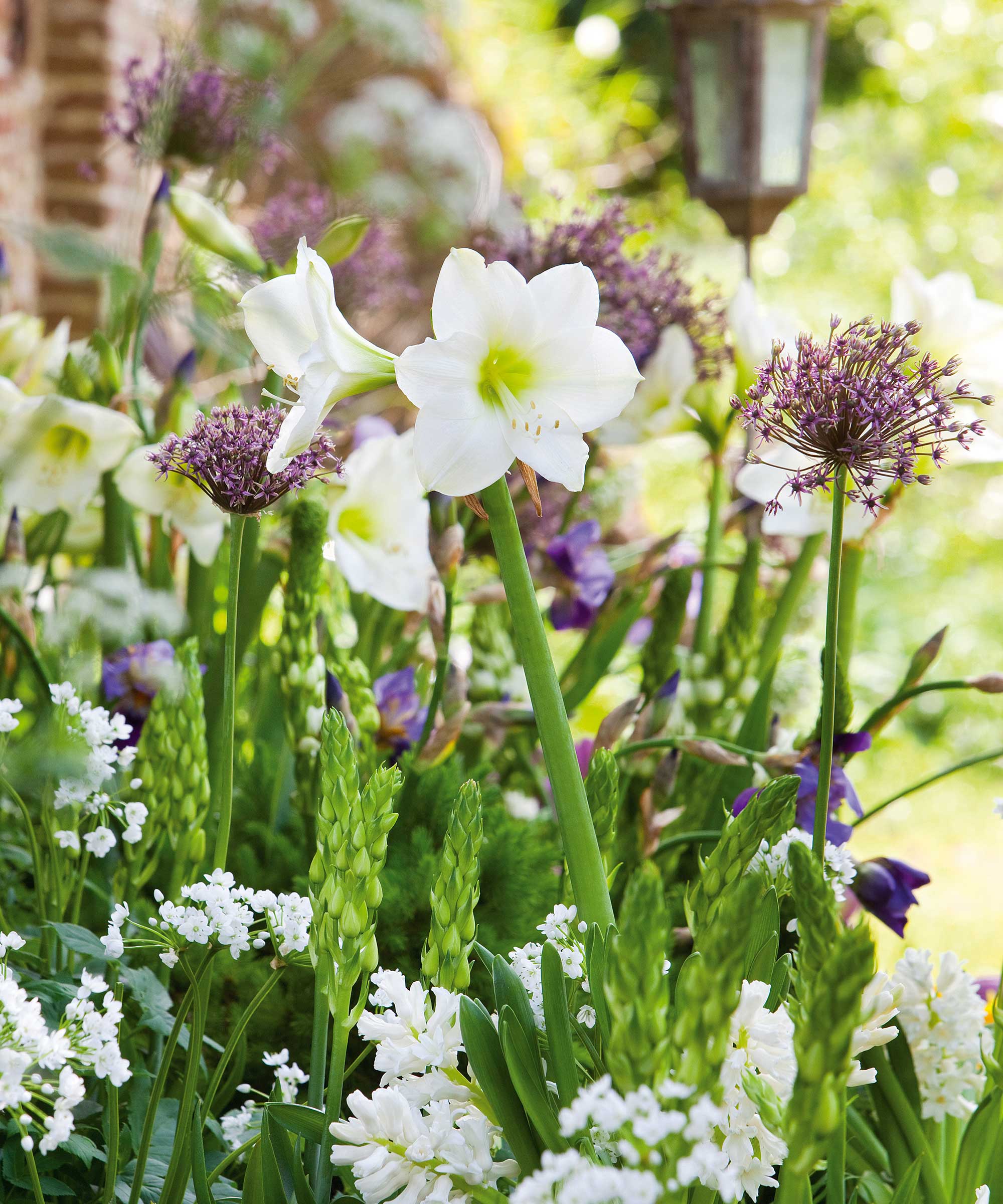
Add alliums to your display for late-spring structure and color
More top tips for your bulb lasagne
- 'The range of flower bulbs is extensive. Always check the packaging for the correct flowering period, so you can make the right combinations,' says the team at iBulb.
- By choosing the right combinations, you can ensure that different flowering periods align nicely for your display. 'An example of such a combination is snowdrops (January), crocuses (February), botanical daffodils (March), grape hyacinths (April), tulips (April/May) and alliums (June),' advises iBulb. You could even choose to make an all-tulip lasagne, as there are many varieties that bloom at different times.
- 'Do make sure your bulbs are in the ground before the first frost. Flower bulbs need the cold to grow and bloom properly,' they add.
- Don't forget about alliums, which are one of the latest-flowering bulbs. Plant them right at the bottom of your lasagne. 'They are easy to grow, the flowers last for ages and afterwards the seed heads are also very attractive. A sophisticated choice for any garden,' says Squire's Garden Centres. You can find tips on how to plant allium bulbs in our guide.

The garden was always a big part of Holly's life growing up, as was the surrounding New Forest where she lived. Her appreciation for the great outdoors has only grown since then. She's been an allotment keeper, a professional gardener, and a botanical illustrator – plants are her passion.
